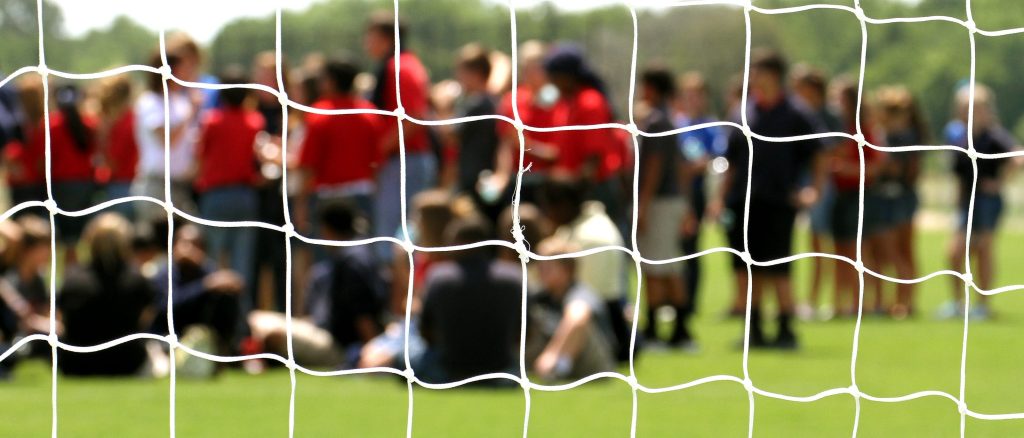Survey: Parents shell out for kids sports with college, pros in mind

Parents spend $3,000 annually on their children’s sports, the majority of them taking action elsewhere to manage rising costs, according to New York Life’s Insurance’s latest Wealth Watch survey.
The results of the poll of U.S. adults with children aged 7 to 18 who participate on youth sports, conducted March 1 to 6, also indicates parents are pouring in money believing they are investing in an ultimate payoff.
‘Our research suggests that parents are deeply committed to supporting their children’s athletic potential – not just for the joy of sport, but as a pathway to higher education and future success,’ Jessica Ruggles, corporate vice president of financial wellness at New York Life, said in a release shared with USA TODAY Sports prior to Tuesday’s publication of its results.
According to the nationally representative online survey of 1,036 participants whose kids play school, community and travel sports, 83% of parents believe their child or children have the skills to play at the collegiate level, while 49% are confident that their child will receive an athletic scholarship and 75% believe they have the skills to play professionally despite long odds that suggest otherwise.
According to 2024 NCAA data, supplemented by data from the National Federation of State High School Associations, about 6% of high school athletes play collegiately (a lower percentage play Division 1), while less than 1% of NCAA athletes are drafted into a professional sport.
‘Many families are counting on athletic scholarships to ease the cost of college, yet those opportunities are limited and uncertain, especially in the face of injury or shifting priorities,’ Ruggles says.
According to the New York Life data, parents are adjusting household budgets and dipping into savings to support their kids’ sports, with 76% taking some kind of action to manage costs, usually by reducing spending in other areas (38%). Twenty percent report that they had to reduce or stop their children’s participation due to financial constraints.
The Wealth Watch survey, which tracks Americans’ financial goals, progress toward those goals and feelings about their ability to secure their financial futures, reflects other statistical and anecdotal evidence of a national mania over prioritizing, and even monetizing, kids sports.
Parents spent 46% more on their child’s primary sport in 2024 than in 2019, according to another recent survey conducted by the Aspen Institute in partnership with Utah State University and Louisiana Tech University. That’s twice the rate of price inflations in the U.S. economy during the same period, according the Aspen Institute.
According to Aspen, which regularly collects and distributes research and the latest trends in youth sports, parents spend more than $40 billion annually on their children’s sports.
‘It all starts with, I think, the college admissions process, plus big time money in college sports; it creates this signal that goes all the way down to eight years old, probably even earlier,’ bestselling author and father Michael Lewis said in March at Aspen’s Project Play Summit in Berkeley, California. Project Play is Aspen’s initiative to build healthy communities through sports and develop nationwide access to them.
‘The parents can tell themselves, ‘We’re doing this because you get this advantage in college,’ either you get free tuition or now it’s for even more, like they’re going to get NIL deals and all that,’ said Lewis, a former coach of his daughter’s softball team who has written two books about the youth sports experience. ‘It’s kind of like the way people respond way too strongly to lottery-like temptation.
‘Most kids are not going to get any of that, and the parents are going to spend a lot more money than they should spend chasing this dream; sometimes the kids don’t even want to be there. When you have this prize that’s dangled on the other end, and very poor education all the way through about the likelihood of getting a prize, you’re going to get a lot of distortion in people’s behavior.’
According NCSA College Recruiting, a website that helps connect high school athletes with collegiate coaches, fewer than 2% of high school athletes are offered athletic scholarships in college.
COACH STEVE: Reality check: What do you really get from youth sports?
While the number of scholarships could increase with the House vs. NCAA settlement, thousands of current walk-on athletes stand to lose their places on Division I teams if it is approved.
‘The pursuit of athletic goals can also place a real financial and emotional strain on families,’ New York Life’s Ruggles said. ‘As parents make meaningful sacrifices to nurture their children’s passions, it’s essential to prioritize both performance and well-being. Building a trusted team – including athletic mentors and financial coaches – can give families clarity and confidence to champion their child’s growth without compromising their own stability, maintaining confidence in their broader financial future.’
Sports parents surveyed by New York Life had an average of $30,787 saved for their children’s higher education. If you’re a parent with goals of your kid playing collegiately, you may know that, in some cases, annual family sports dues even approach that figure.
COACH STEVE: Is it worth it? 10 questions teen athletes need to ask if they play on a travel team
‘This kind of long-term investment reflects a belief in hard work and opportunity,’ Ruggles says. ‘But while hope and effort are essential, so is planning.’
And perhaps a shift in our priorities. Sixty-four percent of parents in the New York Life survey reported rising costs for kids sports in recent years. Nearly all of them (99%) are actively involved in their kids’ sports, attending games, practices, or managing transportation.
‘I think the system does not work for working families,’ Jennifer Siebel Newsom, the first partner of California Gov. Gavin Newsom and co-chair of the governor’s council on physical fitness and mental well-being, said at the Project Play Summit. She is also a sports mom.
‘The cost of entering and being a part of these clubs are increasing (and it’s) an obstacle for too many families,’ she said. ‘It’s also disruptive, because, as kids are playing at higher and more competitive levels, they have pressure at school academically if they’re traveling all these weekends. … That’s not healthy for family dynamics.
‘I just think we need a real pattern interrupt. We need to go back to local. We need to go back to kids playing rec sports, but like skilled rec sports, play-based where they’re building confidence, building skills, growing as a team player at their school or at their local rec center, so that it works for local families, isn’t highly exorbitant, highly expensive.’
Steve Borelli, aka Coach Steve, has been an editor and writer with USA TODAY since 1999. He spent 10 years coaching his two sons’ baseball and basketball teams. He and his wife, Colleen, are now sports parents for two high schoolers. His column is posted weekly. For his past columns, click here.





